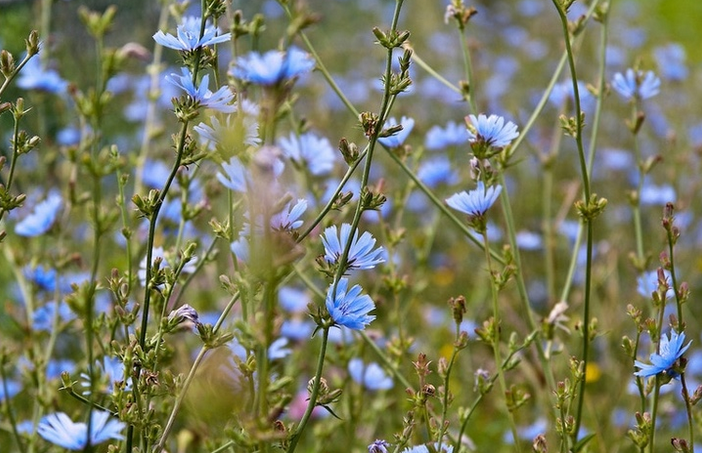Chicory — or Cichorium intybus is — believed to have first been cultivated in ancient Egypt. The plant was a favourite among philosophers such as Horace, Virgil, Pliny and Ovid who documented their fondness for it in their writings.
Centuries later, chicory gained prominence in Northern Europe, when it was discovered the root could be used as a substitute for coffee.
The plant was eventually introduced to the United States in the 19th century, where it continues to be used to add body and bitterness to coffee — a practice prominent in New Orleans.
Growth and harvest
The deep-rooted, short-term perennial plant can be grown from cuttings or from seeds. In Australia, chicory grows during late spring and summer and is considered naturalised.
It is adapted to a wide variety of soil types and climates and will even thrive in low-rainfall conditions thanks to its taproot system. To utilise the roots, the plant should be left in the ground until it flowers — a process that typically happens around 120 days after the seeds are planted.
Cultivated leaf chicory falls into two main categories: witlof and radicchio. The type of chicory will affect when it is harvested. Radicchio should be harvested young before the leaves turn bitter. Witlof should be harvested around four months after sowing and is best harvested in the cooler months.
Flavour profile and appearance
Over the centuries that humans have been growing and harvesting chicory, the plant has evolved to encompass a number of varieties including Belgian endive, curly endive and sugarloaf.
However, the original species plant, Chicorium intybus, is a flowering herb. The flowers are the best way of identifying the chicory plant. Depending on the age and level of sun exposure, the violet-blue flowers range from light to dark and sit on top of stiff, hairy stems that can grow up to 1 metre tall.
Ground chicory root tastes quite similar to coffee, and can be described as having
warm, nutty, earthy and bitter notes. The leaves also have a bitter taste, but are milder the earlier they are harvested.
Culinary applications and storage
With its long list of potential uses, chicory is a no-waste plant. The leaves, buds and roots of the plant can all be consumed, each with different culinary applications.
The most common use of the root is to roast and grind it into a powder to create a coffee substitute. However, chicory root can also be boiled and eaten whole as a vegetable. Once roasted, chicory roots can be stored in powder form in the fridge for up to one year or for a few weeks in a cool, dark place.
Witlof and radicchio can be eaten raw and added to salads. They can also be cooked on the stove or roasted in the oven for a less-bitter flavour. Much like any other lettuce-type plant, chicory leaves will last a couple of days, and can be stored in the fridge loosely wrapped in a damp towel.

